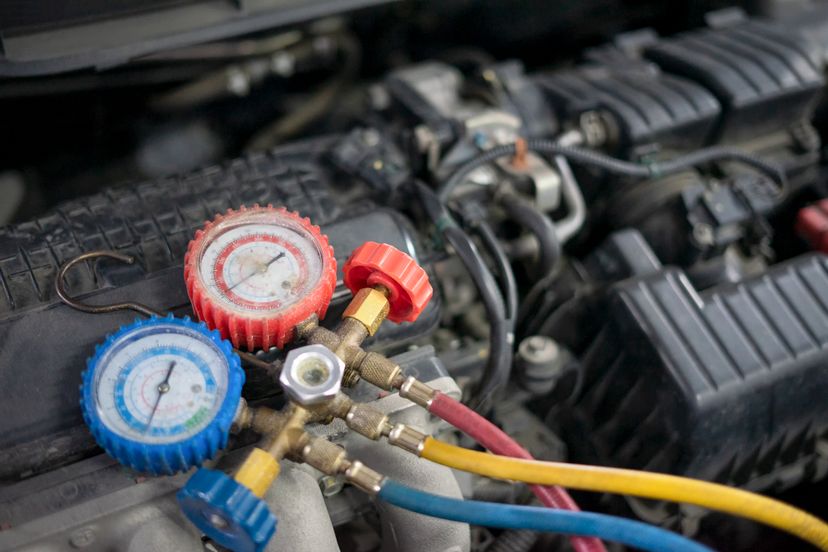Understanding the common causes of coolant leaks is essential in preventing them and keeping your engine running smoothly. In this section, we explore six typical causes of coolant leaks:
- Damaged coolant hoses
- Leaking heater core
- Worn out water pump
- Faulty radiator caps
- Corroded radiators
- Blown head gaskets
By knowing these causes, you can take appropriate measures to maintain your cooling system and prevent future leaks.
1. Damaged Hoses
Worn or cracked hoses can lead to coolant leaks, as they fail to maintain a tight seal with other components. A hose is typically made from rubber, which can wear down and crack over time, in most cases resulting in leaking. The lower radiator hose is the most common to show leaking because it's more pressure than a hose at the top.
Regularly inspecting your radiator hoses for signs of swelling, cracks or unusual softness can help you identify and address potential leaks before they become a significant issue.
2. Leaking Heater Core
A heater core is like a mini-radiator inside your car that helps provide heat to the cabin by circulating hot coolant. When it leaks, you might notice a sweet smell inside the car or see foggy windows because coolant vapor gets inside.
Additionally, check for wet spots or puddles under the dashboard, as these can be signs of a leaking heater core. If your car's heater stops working or the engine starts to overheat, these are also potential indicators of a heater core issue.
3. Bad Water Pump Seal
Since it pressurizes the entire system, you car's water pump can be another likely source of coolant issues.
As the pump does its job over thousands of miles, the rubber seal or metal bearing in the assembly will eventually wear out and lead to water pump failure. A worn water pump may also be accompanied by a warning light on the dashboard of your vehicle.
Located on the bottom of the pump is a weep hole which will drip small amounts of antifreeze to help relieve the pump of pressure and also indicate that the pump seal is on its way to failing.
Replacing a water pump is best left to a professional because it typically requires draining all coolant in the car, replacing the accessory belt and removing the engine timing assembly.
4. Faulty Radiator Cap
A damaged or loose radiator cap can cause coolant to leak by reducing the pressure in the the tank and radiator system, making it harder for the coolant to effectively protect car's engine from heat.
To diagnose a radiator cap leak, check the cap for the correct pressure and consult your car owner’s manual for guidance.
5. Corroded Radiator
Corrosion and rust can cause coolant to drain out of the radiator due to the formation of a hole. This type of leak is often indicated by discoloration or rust on the radiator’s body.
Regular radiator maintenance, such as flushing the fluid and inspecting the radiator for signs of rust, can help prevent leaking and ensure the cooling system functions optimally.
6. Blown Head Gasket
The head gasket acts as a seal between the channels in which coolant and oil flow through the engine block. When a head gasket blows, it can no longer prevent oil and coolant from mixing. The coolant will begin leaking internally and spread corrosive chemicals to moving parts of the engine.
This is highly hazardous and can cause engine breakdown. Additionally, a blown head gasket can cause coolant to leak out of the car's engine, leading to decreased cooling capacity as the coolant level drops.
If you suspect a blown head gasket, it’s essential to seek professional assistance to diagnose and repair the issue. Driving with a blown head gasket will cause the engine to overheat and experience severe damage, so it’s crucial to address this problem as soon as possible.
